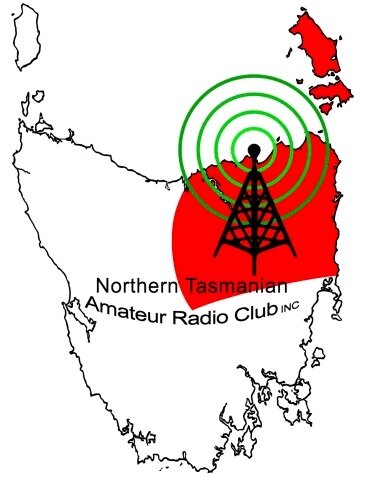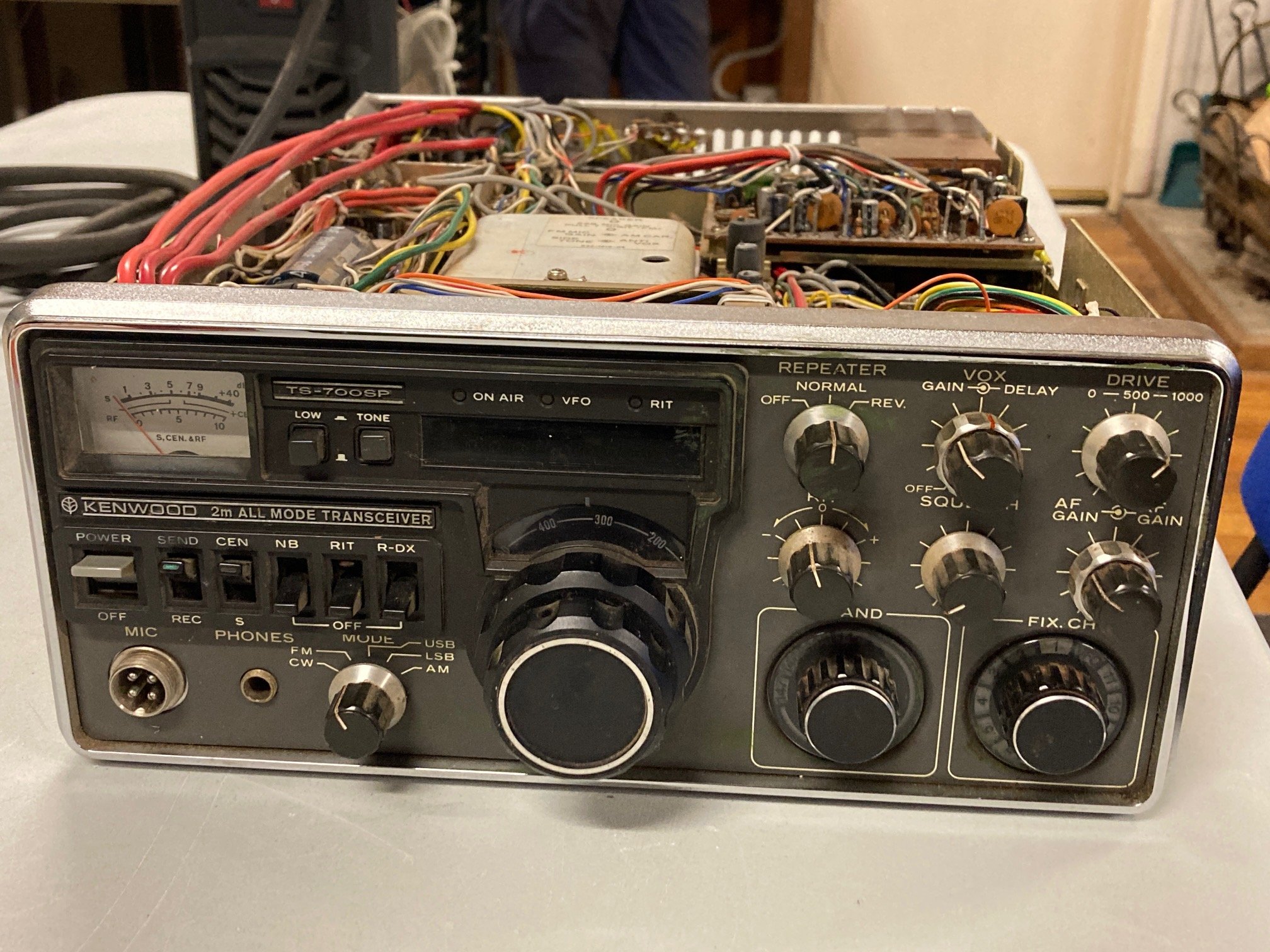Broadcast - 20 April 2025
Last Wednesday Club Room technical night saw the arrival of Colin VK7ZCF with a rather nice looking canvas back-pack. Once he had put it down and begun to open it up it was obvious it wasn’t a normal hiking back-pack with one big central bag at the core. It actually had the feel of a tool roll, the type where all the tools have individual compartments and they all roll up for storage and transportation. In the centre of the back-pack frame, suspension and padding, Colin had mounted an aluminium panel. This panel was uncovered when the vertical compartment wings either side were unrolled. Some of these decent sized top to bottom compartments were suitable for rods to make up antennas or mast sections as desired. Colin even had a collapsible tripod in one. There were plenty of other compartments for fittings, coaxial cables, rolled up antenna wire and guy ropes. The aluminium backing plate had the electronic equipment mounted on it. Most notably an Icom IC7000, a recently constructed automatic antenna matching kit model AT100 and an 18 AH Lithium deep cycle battery. From the NTARC website pictures you may notice a space next to the battery, this is waiting for the fuse distribution module which will then allow Colin to complete the wiring. Colin has even 3D printed mounting side cheeks for the IC7000 as well as mounting brackets to secure the antenna matcher plus battery locators and holding strap. All fastening onto the aluminium backing panel is provided by “Nutserts”, a panel riveted device that provides an internal thread for screwing a bolt into. Although not a water proof set up it can easily be covered with a waterproof backpack over-cover to keep dust and water out. For interest the Icom IC7000 is circa 2010 and is an all band all mode transceiver capable of 100 W at 160 metres to 35 W at 70cm, all this in a package weighing 2.3 kg. Colin estimated an all up weight including back pack to be about 11 kg, now remember that 11 kg figure for the moment.
Ross VK7ALH happened to have with him a Kenwood, TS700SP, a 2 metre band all mode 10 Watt transceiver from circa 1980, the only major difference is modern equipment now tend to have quite large displays whereas this unit only had a physical meter and digital readout. All boards are modular but not plug in, therefor it is point to point wired and that’s a lot of cabling! If it was a car it would be considered a “Modern Classic”, not a bad description really. To put things into perspective this rig by itself weighs in at 11kg very similar to Colin’s entire backpack including radio, antennas and battery! A fine example of the progress in miniaturisation and plastic within modern rigs.
Peter VK7SP and Andre VK7ZAB brought along and displayed on the main TV some of the SSTV pictures they had decoded from the International Space Station or ISS for short. After hearing about the six day ARISS “Humans in Space” event, in the WIA National News on Sunday morning, they decided to have a go at receiving these pictures. Peter used an Icom 705 with his V dipole antenna at ground level that he normally uses for receiving weather satellite images. Andre’ used a roof mounted VHF/UHF vertical normally setup to receive the local repeaters. Both antennas gave a similar results when used for the ISS taking into account the different locations. Peter also had his laptop and SDR dongle so he could demonstrate the Gpredict and SDR software. Once ISS had been selected in Gpredict it showed our next visible pass of the Space Station. From this it generated a polar plot of each path with elevation verses time and direction. It also calculated the Doppler correction required. Looking at the SDR software you could see the receive frequency change as the satellite tracked across the sky. To put the knowledge to practical use members including two potential amateurs headed outside into the carpark at the calculated time to hopefully see the ISS and also listen to the SSTV signal on a handheld. Luckily it was a clear night and around the predicted time the familiar SSTV sound could be heard. Shortly after, the actual ISS could be spotted on its trajectory across the sky. Once back inside more of the SSTV images for the Yuri Gagarin anniversary celebration were displayed. Thanks Peter and Andre’ it is wonderful to be able to successfully demonstrate the combination of some excellent software with real world results.
After the Gpredict and ISS demonstration there was an impromptu information session from Ross and Colin in their capacity of low and high voltage practitioners. Mainly centred around industrial installation faults and also focusing on safety. They covered and stressed the need for correct circuit isolation before the commencement of any testing or measurements. Outlining the pitfalls of assumed correct isolation in the presence of high circuit induction or even miss interpretation of test results. This was an enthralling second section to the evening. Safety procedures, common sense and experience certainly plays a major part. Hopefully we can talk Ross and Colin into a part two of this discussion.
As always pictures will be available on the NTARC Web site under “Blogs” for this broadcast. NTARC Blogs
UPCOMING EVENTS
TestNet and TechNet session - Every Wednesday, TestNet/CW course on 3.580MHz from 7 pm, then a TechNet on 3.567MHz from 7.30 pm till 8.30 pm. Your host for the evening is Nic VK7WW.
Club Room Technical night session – The next session will be on Wednesday the 30th April, at the usual time of 6.30 pm at the Club Room Archer Street, Rocherlea.
Coffee Morning – Please note that due to Anzac Day Public Holiday there will be no coffee morning on Friday the 25th April.
Finally - A reminder to all members that if you have any items of news you would like added to our weekly roundup, no matter how trivial, then please email them to the Secretary at the following address news@ntarc.net all items to be received no later than 5 pm on the Friday prior to the Broadcast.
That’s all folks,
73, Stefan VK7ZSB, Secretary NTARC Inc NTARC Inc.









